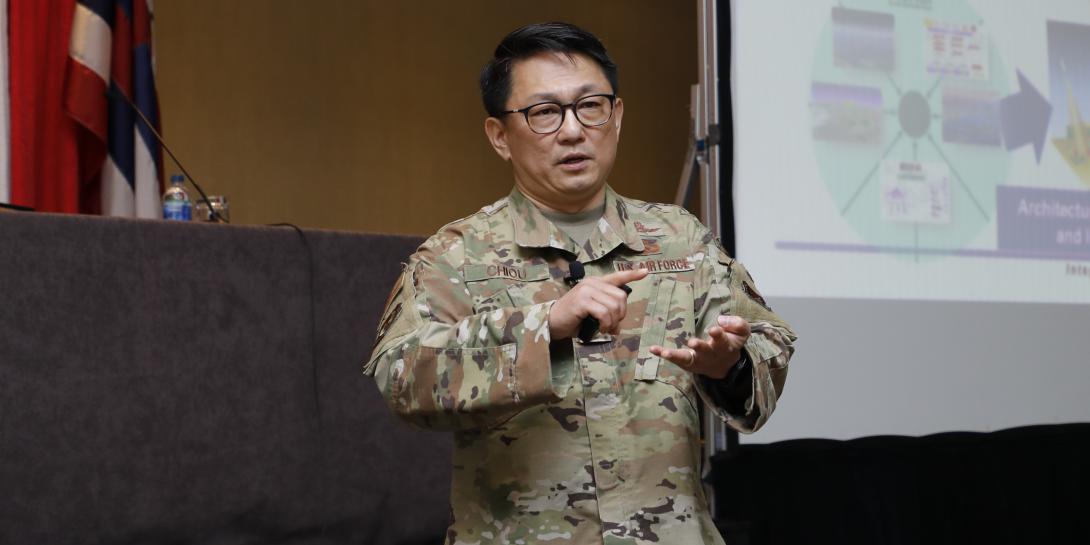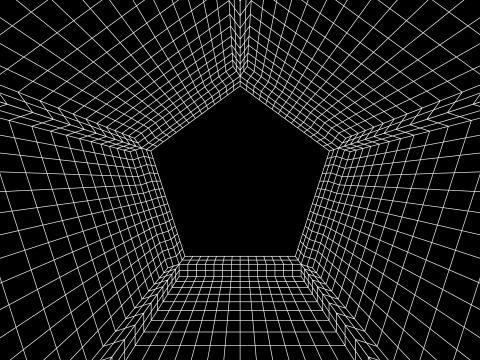Air Force Bets on Its Integrated Warfighting Network
The U.S. Air Force is seeking to overcome the networking issues all the services face though the development of a new architecture that would create an all-encompassing information environment, a program expert said. This network would provide for all the warfighter’s data needs while ensuring security through redundancy and complexity.
Elements of the proposed Integrated Warfighting Network (IWN) were presented in a briefing on the third and final day of TechNet Indo-Pacific, held in Honolulu April 11-13. Hosting the briefing was Col. Peter “STIX” Chiou, USAF, chief of Integrated Warfighting Networks, Air Force Chief Architect Office, and he began by dashing some prevalent myths about the effort.
“People think the Integrated Warfighting Network is a thing, but it’s not,” he stated. “It’s an architectural framework, it’s a concept.
“We are not building an [information technology] network,” he continued. “We are building a cyberspace environment. We want to envelop Earth with a connected fabric.”
We are not building an IT network. We are building a cyberspace environment. We want to envelop Earth with a connected fabric.—Col. Peter “STIX” Chiou, USAF, chief of Integrated Warfighting Networks, Air Force Chief Architect Office. #AFCEATechNet
— Bob Ackerman (@rkackerman) April 13, 2022
This connected fabric would, by nature of its size and complexity, provide its own security. “We want a fabric that is so robust, so assured that it is almost impossible to take down” the colonel declared. “We want to build a network that is so massive that it is difficult for our adversaries to degrade.”
We want to build a network that is so massive that it is difficult for our adversaries to degrade.—Col. Peter “STIX” Chiou, USAF, chief of Integrated Warfighting Networks, Air Force Chief Architect Office. #AFCEATechNet
— Bob Ackerman (@rkackerman) April 13, 2022
The IWN would feature secure routing capable of doing full end-to-end encryption without using tunnels. Vector routing would enable routing traffic based on policy and existing network conditions. These might include bandwidth, jitter, latency, error rate and other signals. And it would have the ability to apply assured messaging through duplicate packets down every path.
Col. Chiou foresees an environment in which warfighters do not even think about engaging its capabilities but instead view its links as everyday assets. “We want to think about the network like we do electricity,” the colonel analogized. “You don’t think about it; it’s just there.”
All the Air Force’s assets, as well as individual warfighters, would be able to consume data from the IWN as needed, and they also would contribute their own data to the all-encompassing fabric. Satellite communications (SATCOM) would play a role, with new commercial low- and medium-earth-orbit constellations figuring in the architecture.
“SATCOM bands—they’re great, let’s use them all,” the colonel suggested. “We’re talking to vendors who are making special lens antennas that can connect with all the bands.” With this technology, a single antenna atop an aircraft or underneath it would be able to provide satellite connectivity with all the different constellations chosen for the IWN.
Much of the environment would come from the private sector, and Col. Chiou urged industry members to join the effort and work collaboratively to advance technology capabilities.
I would love to see Cisco and Juniper sit in the same room and talk about what they can do together to help our warfighters.—Col. Peter “STIX” Chiou, USAF, chief of Integrated Warfighting Networks, Air Force Chief Architect Office. #AFCEATechNet
— Bob Ackerman (@rkackerman) April 13, 2022
“I would love to see Cisco and Juniper sit in the same room and talk about what they can do together to help our warfighters,” he offered. “We have a bright vibrant private sector. Let’s exploit that. We want to be able to go to war with a whole-of-nation approach.”




Comment
Great concept and a logical
Great concept and a logical step forward in the evolution of the warfighter network architecture. Let’s give our warfighters access to any assets they need immediately not 15 minutes later when it’s to late already as well as a network that could be using anything from a wire to a satellite to make it harder to take it all down at once. Love to see it in use asap…
Comments